1. Introduction
In the recent monograph [1, p.129], Kulenovic and Glass give an open problem as follows:
Open problem 6.10.16 (A population model).
Assume that  and
and . Investigate the global character of all positive solutions of the systems:
. Investigate the global character of all positive solutions of the systems:
 (1)
(1)
where , which may be viewed as a population model.
, which may be viewed as a population model.
To this end, we consider Equation (1) and obtain some interesting results about the positive solutions of Equation (1).
2. Basic Lemma
Lemma 1 Assume that ,
, . Then the following statements are true:
. Then the following statements are true:
1) If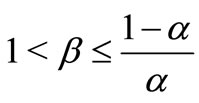 , then Equation (1) has a unique nonegative equilibrium solution as follows:
, then Equation (1) has a unique nonegative equilibrium solution as follows:
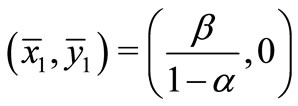
2) If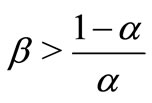 , then Equation (1) has two no-negative equilibrium solutions as follows:
, then Equation (1) has two no-negative equilibrium solutions as follows:

where ,
, 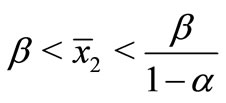 such that
such that
 (2)
(2)
Proof: The equilibrium equations about Equation (1) can be written as follows:
 (3)
(3)
It is easy to see that ,
,  is a group solutions of Equation (3).
is a group solutions of Equation (3).
By (3) we obtain
 (4)
(4)
Thus
 (5)
(5)
Noting that (3) and (4) we get:

Changing (5) to (6)
 (6)
(6)
Set


Observing that



So, by the convex functions properties, if
 , then we can obtain Equation (6) has a unique positive solution
, then we can obtain Equation (6) has a unique positive solution .
.
In fact, by the continuous of , we can get
, we can get

Hence, we complete the proof.
3. Main Results
Theorem 3.1 Assume that  and
and .
.
Then every positive solutions  and
and  of Equation (1) have the following properties:
of Equation (1) have the following properties:
1) ;
;
2) .
.
Proof: By Equation (1) we have

It is to say that 
 .
.
By Equation (1) we also get

Thus ,
, .
.
This completes the proof.
Theorem 3.2 Assume that ,
, 
and . Then every positive solutions of Equation (1) convergences to the unique no-negative equilibrium solution
. Then every positive solutions of Equation (1) convergences to the unique no-negative equilibrium solution .
.
Proof: By Theorem 3.1, we have that there exists a nature number n0 such that 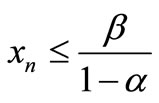 for
for .
.
Hence, by Equation (1) we get

Thus  is decreasing.
is decreasing.
Suppose that
 (7)
(7)
Then by Equation (1) we have

By induction we obtain

Thus . Hence there exists a
. Hence there exists a  such that
such that  for
for .
.
Noting that Equation (1)

By induction,

It is to see that . This is a contradiction with (7), then
. This is a contradiction with (7), then .
.
Noting that Equation (1) we have

i.e.

Let ,
, . Then
. Then

By induction we obtain
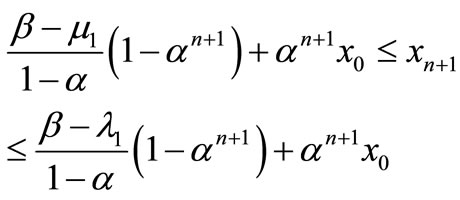
as , then
, then
 (8)
(8)
Because of , we obtain that
, we obtain that .
.
Hence
 (9)
(9)
By (9) we get .
.
We complete the proof.
Theorem 3.3 Assume that ,
,  and
and . Then Equation (1) is permanent.
. Then Equation (1) is permanent.
Proof: By Equation (1) we obtain
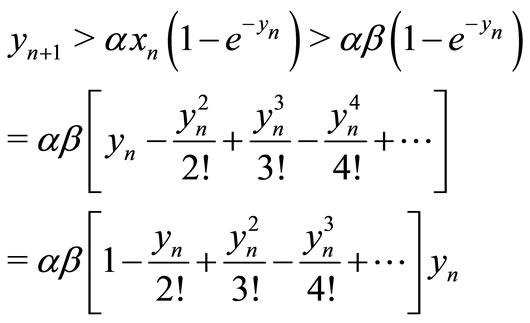
There exists two positive constants  and
and  such that
such that

Hence .
.
Using Theorem 3.1, we complete the proof.
NOTES